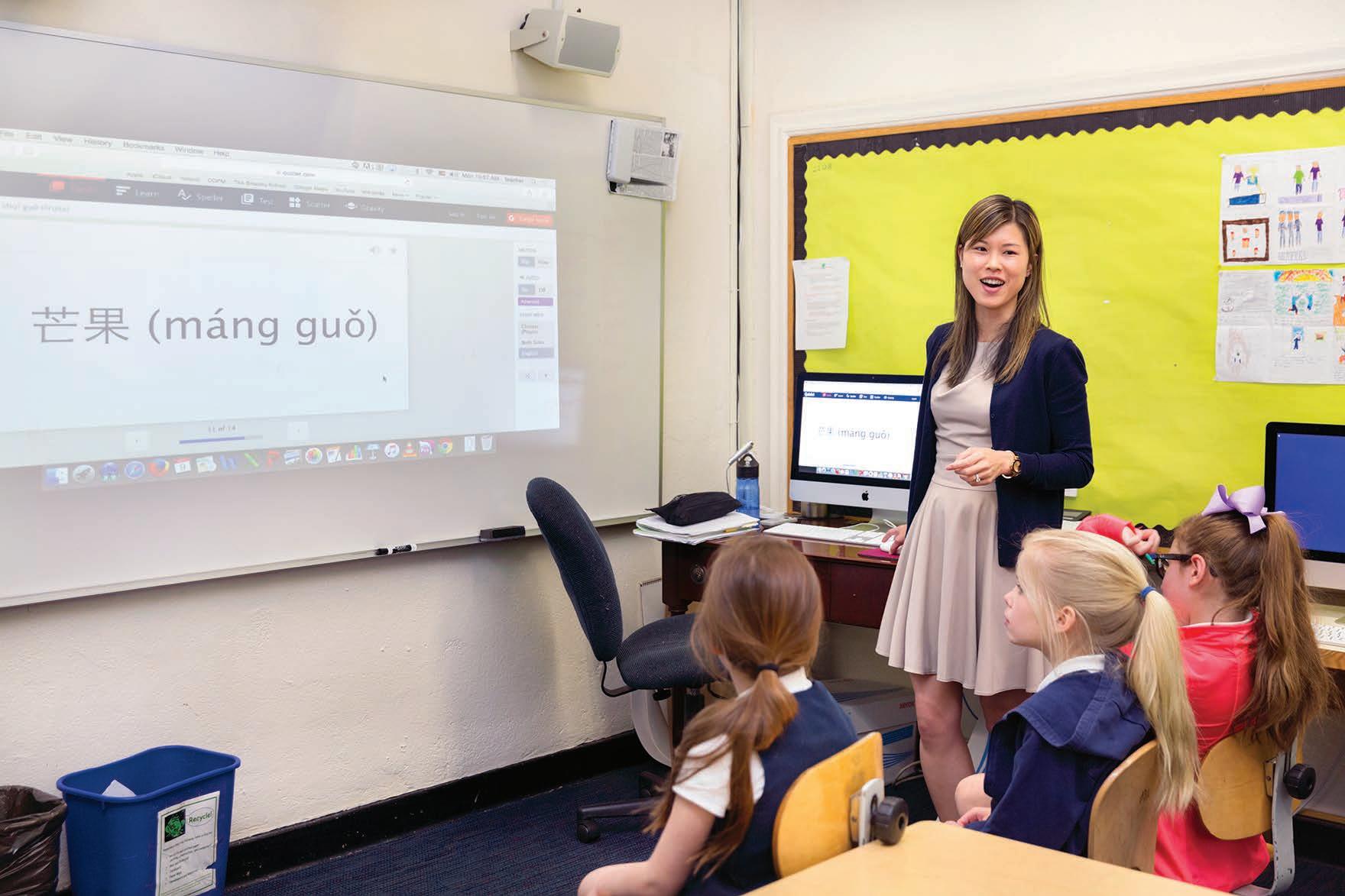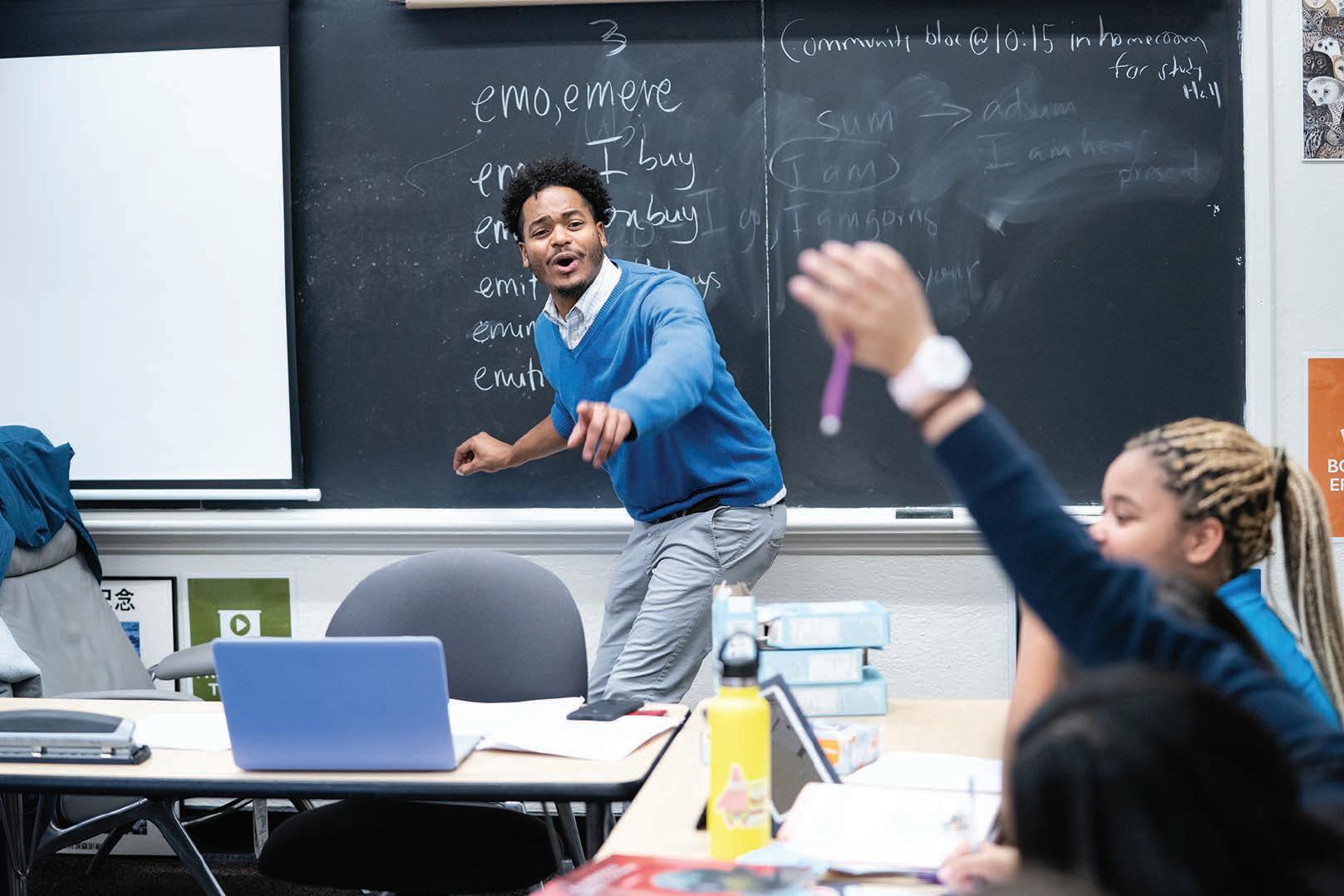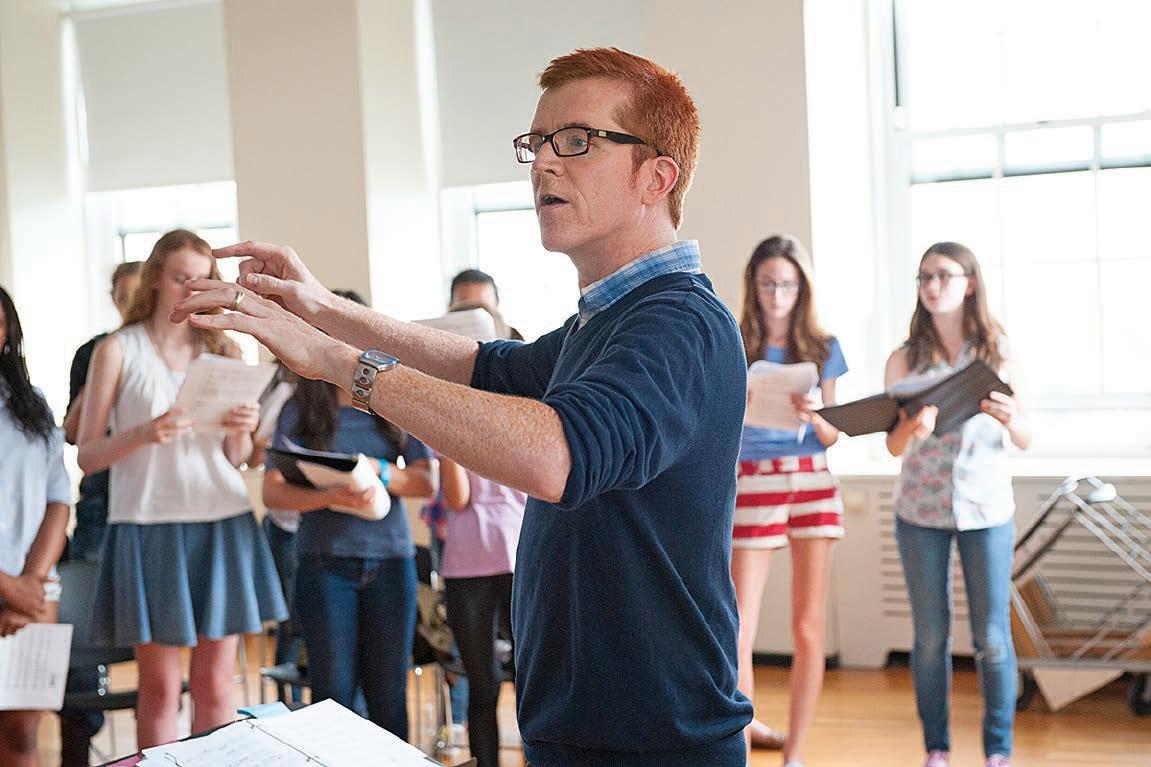
6 minute read
A Conversation with Faculty
2 INTELLECTUAL ADVENTURES A Conversation with Faculty
The gift of friendship and high expectations
Brearley teachers are as excited as their students to come to school. Highly accomplished in their fields, they are attentive to each student’s aspirations and pace of development— her personality and talents. By asking much, and by serving as role models of commitment and achievement, teachers here inspire their students to stretch beyond their perceived limits and to internalize the connections between good work habits and success. Below, faculty members who specialize in a range of disciplines and teach Brearley girls of all ages talk about why teaching these students at this school is so special.
How is your teaching style or approach different because it happens here?
“My teaching continues to evolve as a result of being in the classroom with our students. To meet a student where she is, plant an idea, watch the idea germinate, then graft another branch, on and on until a mighty learning oak appears, is just what it’s like working with these girls. Their innate curiosity, zest for learning, and feeling of limitless opportunity keep the teaching life new and vibrant, even after almost three decades here.”
MARIA ZIMMERMANN, ASSISTANT HEAD OF SCHOOL FOR STUDENT LIFE AND HEAD OF THE LOWER SCHOOL
“With these students, the sky’s the limit. There is nothing you cannot try in the classroom because there is nothing these girls are not game to tackle. That means we can remain creative and fresh in our approach even after 25 years.”
LAURIE SEMINARA, SCIENCE DEPARTMENT
“Classroom communities at Brearley function as natural affinity groups of young girls. Teaching in this setting has enabled me to focus on integrating our academic curriculum with social justice issues specifically faced by girls and women in our society. You might call the group of students who arrive to my door everyday a “class,” but we call ourselves a family—we learn, we laugh, we sing, we dance together; we make mistakes, we get on each other's nerves once in awhile, we hug, we heal and we take care of one another all school year long. Being a teacher at Brearley has granted me the privilege of a front row seat to this perennially blooming sisterhood.”
ARIEL SANABRIA, CLASS I ROOM TEACHER
“While I am responsible for my students meeting each lesson’s objectives, it is my students who truly become the teachers. Brearley students are relentless questioners who examine each lesson with a critical eye. They guide the discussion, based on what is important to them. Through this, knowledge is shared and wisdom is gleaned. I love working in a school environment where teachers and students learn together.”
What difference does cross-divisional teaching make to your students and to you as a teacher?
“Because our teachers teach across the divisions, they are able to guide the students carefully and support them well through the curriculum. They know very well where the program begins and ends.”
JIM MULKIN, ASSISTANT HEAD OF SCHOOL FOR ACADEMIC LIFE, CLASSICS DEPARTMENT
“I am a better teacher to my Upper School students for knowing how to simplify complex explanations and make appropriate lessons, readings and presentations for Middle School students. I also remember how the Upper School girls thought about questions when they were younger. I know there are little girls inside my Upper School students, and I have a sense of the older student who lurks inside every Middle Schooler I teach.”
GAIL MARCUS, HISTORY DEPARTMENT
“Cross-divisional teaching is part of our ‘special sauce.’ As a teacher, you become a prism for your discipline—the filter pulling out the essence for different age groups.”
SHEILA KRAMER, DEAN OF STUDENTS TIM BROWNELL, HEAD OF MIDDLE SCHOOL STUDENT LIFE
“From the perspective of an Art Teacher who works in three divisions, I have the opportunity to see students from when they enter school, in the middle of their ‘tweenage,’ and on to their senior year. The trajectory of such growth can be invisible or startling. People develop unpredictably and cross-divisional teaching gives a teacher ‘purchase’ from which to observe growth patterns. A child who bites her saltine crackers into horse shapes in Class I becomes a ‘horse’ artist in Class V, and a biology enthusiast as she graduates. Or a student who tells you in a penciled note after first grade that ‘Art’ was her second favorite subject, graduates with a portfolio of tremendously crafted and sophisticated photographs. These trajectories are held in one's heart. Cross-divisional teaching helps each student to be seen by her teachers.”

Alumnae and parents talk about the caliber of a Brearley education, saying it really is different. To what do you attribute that difference?

“The idea of intentionality is at the core of a Brearley education. Considering how to structure an argument, opinion, or the consequence of a chain of thought by avoiding the arbitrary constructs of a powerful toolbox. Our students are expected to strive and hone their attention for intellectual pursuit and they do so.”
DE
“One big reason is the cross-divisional teaching mentioned before. Another is the commitment to quality teachers. My work builds on the successes all my students bring from their work with all of their other teachers. Students expect to have a good class. That fizz of a shared idea, a shared accomplishment, which happens so often in my classes, is harder to generate in a different atmosphere. Alumnae in college come back and tell me, over and over again, that we didn’t warn them: they thought all classes were like the ones they had at Brearley.”
GM “The best English classes that I have ever taught at Brearley all have this single trait: we are so fully immersed in the language of a text that insights come fast and furious from everyone in the room, accompanied by laughter and a sense of wonder that a human author can encompass so much in words (or is it the other way round, that the language is using the person so powerfully?), and in these classes, I stop being the teacher and become the student of my students, the student of literature.”
JEELEONG KOH, ENGLISH
“Small classes and teaching loads are part of it too. I have time to be a professional historian, keeping up with the latest developments in history, so Brearley students’ education in history is up to date. I have time to concentrate on and get to know my students every semester. Another factor is that each department, working collaboratively, creates its own curriculum. We hire people who not only love their disciplines and their students, but who have a level of quality that isn’t fully definable but is visible in the school. We can focus on the best for our students in an atmosphere of professional respect, in which teachers and administrators are a team, so the environment allows for the generation of new ideas and for continuing self-evaluation and improvement.”
GM
When you think about your students, what are some favorite ah-ha moments that you have witnessed?

“‘I see it!’ announced one Class I student after decoding her first two-syllable word. She was so excited about having ‘cracked the code.’”
MZ
“In Chemistry we were discussing the invention of Kevlar when a student said, ‘Wow, everything literally is Chemistry!’ When discussing carbon monoxide poisoning and the importance of detectors, a student said, ‘Every day we learn something that is critical for all people to know … How is it that I never knew this?’”
LS

If you could tell a prospective student only one thing about Brearley, what would it be?
“If you find adventure in learning, you should come to Brearley.”
GM
“It’s possible that the deepest learning experience of your life will be here.”
MZ








